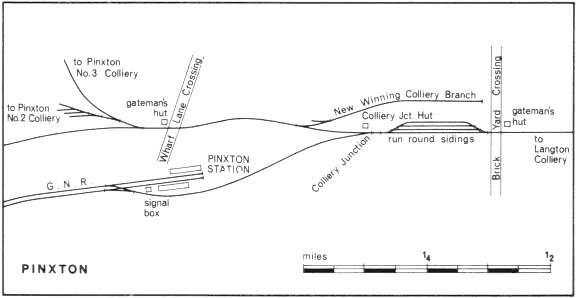
| THE INDUSTRIAL RAILWAY RECORD |
© APRIL 1971 |
For the record....
"National Railway Museum.
– It seems to be clear that notwithstanding Mr. Clement E. Stretton’s enormous exertions to secure a proper resting place for the railway relics of this country, there will soon be little left in the country to put in the museum unless the Government does something in the way of providing funds, because the Americans have agents here buying up all they can. According to the Scientific American the following, amongst other relics, have already found a home in the Field Museum at Chicago:---The original books and working drawings of Edward Bury & Company.
A few books and a large number of original working drawings of the firm of Bury, Curtis & Kennedy.
Books and drawings of E. B. Wilson & Company, late of Leeds.
Original list and some original drawings of the earliest engines upon the Great Western Railway.
The whole of the books and drawings of Messrs. Slaughter & Company, of Bristol.
A number of books and locomotive drawings from the Haigh Foundry, Wigan.
The complete set of working drawings of the firm of Rothwell & Company, late of Bolton.
The original drawings, papers, and documents of Forrester & Company, of Liverpool.
The original drawings of the engine, Invicta, for the Canterbury and Whitstable Railway.
Working drawings of engines for the North Midland Railway.
Original drawings of some engines designed by Mr. J. E. McConnell."
("The Railway Engineer," August 1897.
– Does any reader know if these relics are still in Chicago? And have the contents of the record books, etc., been conveyed to interested parties in Britain? – KPP)Tenders invited for :– "Supply of a steam excavator, four kilometres of portable railway, 60 tip-waggons, and two locomotives. Conditions from La Junta de Obras del Rio Guadalquivir y del Puerto de Sevilla, Spain." ("Iron’ 6th May 1892. It seems probable that this was narrow gauge equipment, and further details of the locomotives (if supplied) would be welcome. The earliest known locomotives at this concern (a Harbour Board) were ordered from Kerr Stuart in September 1895 and despatched three months later. SEVILLA (works no.96) and TRIANA (97) were 1674mm gauge 0−6−0 side tanks with 12in by 20in cylinders and each turned the scales at 21˝ tons. The Kerr Stuart locomotive details in Pocket Book SP (page SP 64) are erroneous, and there is a/so doubt as to the correctness of the owner’s title quoted
– KPP)"OBITUARY. – The death occurred on June 13 [1892] of Mr. John Dixon, of Norton, Mumbles. The deceased, in his capacity as contractor for local railways, had been associated with the South Wales district for nearly forty years. He constructed, among other railways, the Glyncorrwg and Avan Valley, the Neath and Brecon, and the Swansea and Vale of Neath Extension. Latterly he acquired the Swansea and Mumbles Railway, which has since passed into the hands of a syndicate."
(Iron, June 1892. – KPP)
"At the Baldwin Locomotive Works last year were built 670 engines, of which 210 were compounds upon the Vauclain system."
("The Railway Engineer," March 1893 – KPP)
PINXTON. "An engine or train must not leave the Pinxton Collieries to proceed towards Brick Yard Crossing without permission of the Gateman at Wharf Lane Crossing. The Gateman at Wharf Lane Crossing must not give permission for an engine or train to leave the Collieries until he has first obtained permission by telephone from the Gateman at Brick Yard Crossing. The points leading to New Winning Colliery (otherwise known as Brookhill Colliery – KPP), when not in use, must be locked, and the key kept in the Colliery Junction hut. A Colliery Co’s engine must not go to New Winning Colliery until the Shunter in charge of the engine has obtained permission from the Gateman at Brickyard Crossing. The Colliery Company’s engines will only use the line between Pinxton Collieries and Brick Yard Crossing during the day and, after the last Colliery Company’s engine is clear of the line, the Gateman at Brick Yard Crossing must so inform the Signalman at Pinxton Box .... It will not then be necessary for Guards to obtain permission before entering upon the Colliery line at Colliery Junction, nor permission to travel over the Colliery line between Brick Yard Crossing and Pinxton Collieries. Railway Companies’ engines must not go on to the New Winning Colliery Branch." (LNER, Southern Area, Sectional Appendix dated 1st November 1947. The rough map in the Appendix omitted the LMSR (ex−MR) lines in the vicinity as well as several roads and the canal. Our sketch is an exact copy of the Appendix map but with much neater lettering by Roger West. – KPP)

"Mr A. F. Fowler, the Ribble Engineer, presented a report at the last meeting of the Preston Town Council . . . . and it was resolved that there be purchased . . . . [for the Preston Docks] a locomotive engine, and that there be constructed about 1,000 yards of railway, with shedding &c., as a first instalment of the necessary dock appliances." (Iron, 5th August 1892.) Tenders invited by Monday, 19th September 1892, by Preston Corporation for the "construction and delivery f.o.r. at the Albert Edward Dock, Preston, of a saddle tank locomotive of 4 feet 8˝ inch gauge and 12 inch cylinders." (Iron, 26th August 1892. – KPP)